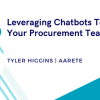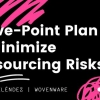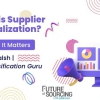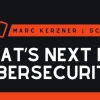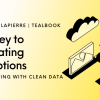Thus far our quest for robotic process automation (RPA) enlightenment has focused on some of the personalities building this emerging industry – from software providers, outsourcers and implementers. Alex Nield is Head of Solution Design for Business Services at Direct Line Group (DLG), and he represents the most important constituency in RPA-land: the small but growing cadre of ‘RPA buyers’. These are the organisations that have actually turned to RPA to transform the efficiency and effectiveness of their operations. It is time for Live Wires to get real.
As a leading UK insurer, DLG has faced many of the challenges confronting other fast-growing corporates: how do we do more with less? How do we make our people more productive? How do we make our systems work together? How do we make our customer interactions as good as they possibly can be?
All big questions, and in mid-2015, Alex and his colleagues picked up on some of the promises that were emerging around RPA at that time, seeing it as a potential tool in the ongoing fight for improvement and transformation. Initial questions on "what is RPA?" grew into an appetite to dig deeper, and by the end of 2015 DLG launched of a Proof of Concept to kick the tyres of RPA. A lot has been learnt in the meantime, and happily Alex is still here to tell the tale.
Direct Line’s initial RPA work has focused primarily on finance, front office and customer-intensive processes, interfacing with a wide range of mainframe, Java and core ops systems. Initial prototypes were promising: "When we plugged RPA in it did work - we were quickly able to show off initial demos." This created quite a buzz, validating the sort of productivity savings RPA software vendors have been proclaiming (with robots 5-10 times more productive than manual processing). This enabled the team to secure funding for a wider RPA rollout, to see what could be achieved over a one-year period.
But moving from Proof of Concepts to larger, live implementation, Alex’s team quickly encountered a key robotics learning: to make real progress with RPA you need to get into a lot of detail. "The idea that you rock up and bash out a process is not quite right. You need far more rigour, structure and interest. The devil is in the detail." Proofs of Concepts do require a moderate level of detail; but live implementations need to be enterprise-grade projects, so the robot can handle mission-critical client and operational data in line with the right process, rules and rigour - for all possible scenarios.
In short, although robotisation is a simple concept, when going live you need to get it right: the last thing you need is a robot incorrectly entering data into systems at 100 records per minute. So for DLG it took longer than expected to pin down the full process flows and business rules to be automated. Alex sees this as an important reality check for those embarking on RPA. "Robotics is sold as a super-quick implementation, but I don’t think that is necessarily true. The reality is that RPA is usually bespoke, requiring significant development."
RPA is all about logic, so it is simplest to deploy where the work to be automated is clear, based on digital data feeds, and rule-bound. But the reality is that processes are fragmented, poorly documented and riddled with hidden tacit knowledge. "RPA as a technology works at a very granular level. And insurance can be quite a fragmented process. Rather than having 100 people working on a single activity, you have two people working on 50 processes, so it is not easy to target large opportunities all the time. Plus you have multiple brands and multiple products." A single activity could have 40 or more different logic routes. All of this means that RPA implementation teams need to wrestle with a lot of detail. "RPA is good, it’s neat and it works, but the investment for build, design and signoff is not to be underestimated."
The bulk of implementation work, rather than lying purely in the configuration of the robot tool itself, resides in process analysis and customer interaction. Legacy process maps might make the job easier, but rarely do they provide all of the detail. Plus there is the task of change management. RPA may take longer than some might expect, but it is still significantly faster than traditional technology projects – meaning that change management, above all the first time round, needs to be handled expertly. The right stakeholders, including the business and IT, need to be actively engaged, so that the robot programme can take root quickly.
But despite the difficulties, there is cause for long-term optimism. DLG’s experience represents a very typical learning curve, in which an organisation deploys a new technology for the first time, validates its suitability, learns about what it can and can’t do, and understands the organisational capabilities that are needed. This means that mistakes can be avoided in future iterations. And each RPA project generates components that can be reused or recycled in later implementations. "RPA is a journey and experience makes it easier next time. The most effort is at the start. Then your returns per process increase in each project."
Above all DLG is achieving what it set out to do with RPA: automating labour-intensive processes, achieving savings, and freeing up talent to work where it adds most value. RPA for them is not and was never seen as a panacea, but "the benefits are real. Of course it is about cost savings to a large degree. But it is also about business transformation. We are using automation to achieve outcomes like customer satisfaction, front-end digitisation, and generating new business."
So what does the future look like? Will the robot estate gradually spread across the entire organisation? For Alex, RPA will be an important feature of the future landscape, but not the only one. "RPA is not the solution itself, it is part of a suite of solutions you might deploy." Artificial intelligence may be on the automation menu at some stage, but at present the main courses are more familiar dishes such as self-service, multi-channel platforms, ERP and process re-engineering.
So the automation momentum is building at DLG, with plans to ramp up RPA in the months ahead. Are there things Alex will do differently next time? Regrets perhaps - but too few to mention. "There are things I would do differently. But when it works well, RPA is a like a hot knife through butter. My advice is to get going, and park the hype."
Paul Morrison leads the Robotics/Smart Automation Advisory and Implementation Practice at Aecus. Follow him on Twitter at @MorrisonPaul1 and at www.aecus.com.



